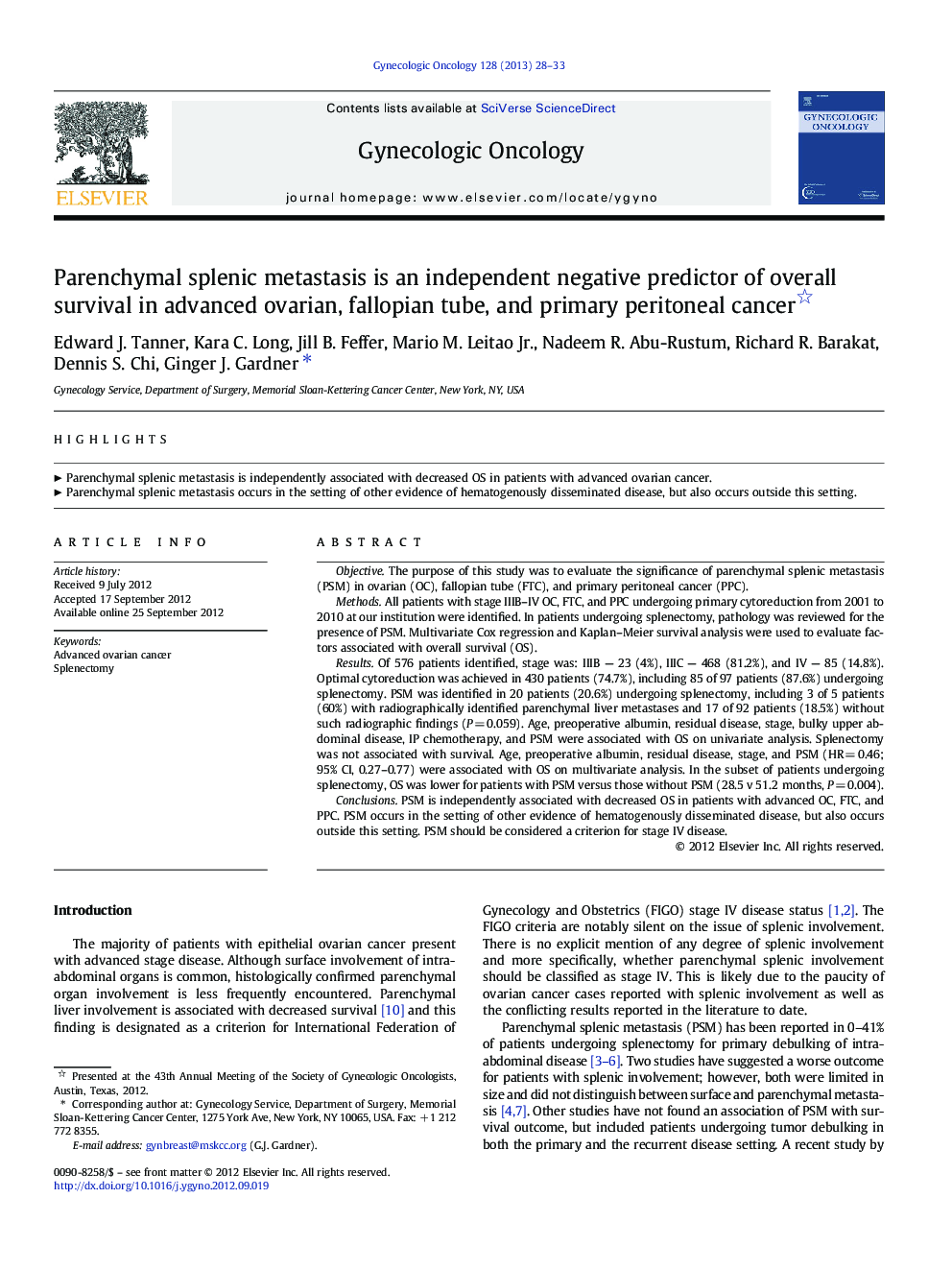| Article ID | Journal | Published Year | Pages | File Type |
|---|---|---|---|---|
| 3942847 | Gynecologic Oncology | 2013 | 6 Pages |
ObjectiveThe purpose of this study was to evaluate the significance of parenchymal splenic metastasis (PSM) in ovarian (OC), fallopian tube (FTC), and primary peritoneal cancer (PPC).MethodsAll patients with stage IIIB–IV OC, FTC, and PPC undergoing primary cytoreduction from 2001 to 2010 at our institution were identified. In patients undergoing splenectomy, pathology was reviewed for the presence of PSM. Multivariate Cox regression and Kaplan–Meier survival analysis were used to evaluate factors associated with overall survival (OS).ResultsOf 576 patients identified, stage was: IIIB — 23 (4%), IIIC — 468 (81.2%), and IV — 85 (14.8%). Optimal cytoreduction was achieved in 430 patients (74.7%), including 85 of 97 patients (87.6%) undergoing splenectomy. PSM was identified in 20 patients (20.6%) undergoing splenectomy, including 3 of 5 patients (60%) with radiographically identified parenchymal liver metastases and 17 of 92 patients (18.5%) without such radiographic findings (P = 0.059). Age, preoperative albumin, residual disease, stage, bulky upper abdominal disease, IP chemotherapy, and PSM were associated with OS on univariate analysis. Splenectomy was not associated with survival. Age, preoperative albumin, residual disease, stage, and PSM (HR = 0.46; 95% CI, 0.27–0.77) were associated with OS on multivariate analysis. In the subset of patients undergoing splenectomy, OS was lower for patients with PSM versus those without PSM (28.5 v 51.2 months, P = 0.004).ConclusionsPSM is independently associated with decreased OS in patients with advanced OC, FTC, and PPC. PSM occurs in the setting of other evidence of hematogenously disseminated disease, but also occurs outside this setting. PSM should be considered a criterion for stage IV disease.
► Parenchymal splenic metastasis is independently associated with decreased OS in patients with advanced ovarian cancer. ► Parenchymal splenic metastasis occurs in the setting of other evidence of hematogenously disseminated disease, but also occurs outside this setting.
